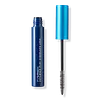What's inside
What's inside
 Key Ingredients
Key Ingredients

 Benefits
Benefits

 Concerns
Concerns

 Ingredients Side-by-side
Ingredients Side-by-side

Water
Skin ConditioningAcrylates/Ethylhexyl Acrylate Copolymer
Copernicia Cerifera Wax
Glyceryl Stearate
EmollientPolyisobutene
Synthetic Beeswax
Emulsion StabilisingStearic Acid
CleansingKaolin
AbrasiveAcrylates Copolymer
Tromethamine
BufferingButylene Glycol
HumectantTocopheryl Acetate
AntioxidantPantethine
EmollientPanthenol
Skin ConditioningLauroyl Lysine
Skin ConditioningCholesterol
EmollientPhytantriol
HumectantMethicone
EmollientGlyceryl Caprylate
EmollientVp/Hexadecene Copolymer
Silica
AbrasiveNylon-6
Laureth-20
EmulsifyingLaureth-21
CleansingLaureth-4
EmulsifyingAcacia Senegal Gum
MaskingHydroxyethylcellulose
Emulsion StabilisingSteareth-2
EmulsifyingSteareth-21
CleansingTrideceth-6 Phosphate
EmulsifyingPvp
Emulsion StabilisingAmmonium Acrylates Copolymer
Polyester-5
1,2-Hexanediol
Skin ConditioningSimethicone
EmollientDipropylene Glycol
HumectantCaprylyl Glycol
EmollientLinoleic Acid
CleansingIsostearic Acid
CleansingPhenethyl Alcohol
MaskingHydrogenated Lecithin
EmulsifyingDisodium EDTA
Tetrahexyldecyl Ascorbate
AntioxidantChloroxylenol
AntimicrobialSodium Dehydroacetate
PreservativePhenoxyethanol
PreservativePotassium Sorbate
PreservativeMica
Cosmetic ColorantCI 77891
Cosmetic ColorantCI 77491
Cosmetic ColorantCI 77499
Cosmetic ColorantCI 77492
Cosmetic ColorantCI 77000
Cosmetic ColorantCI 77163
Cosmetic ColorantCI 77266
Cosmetic ColorantCI 42090
Cosmetic ColorantCI 77400
Cosmetic ColorantCI 75470
Cosmetic ColorantCI 77289
Cosmetic ColorantCI 77288
Cosmetic ColorantCI 77510
Cosmetic ColorantCI 77007
Cosmetic ColorantCI 19140
Cosmetic ColorantWater, Acrylates/Ethylhexyl Acrylate Copolymer, Copernicia Cerifera Wax, Glyceryl Stearate, Polyisobutene, Synthetic Beeswax, Stearic Acid, Kaolin, Acrylates Copolymer, Tromethamine, Butylene Glycol, Tocopheryl Acetate, Pantethine, Panthenol, Lauroyl Lysine, Cholesterol, Phytantriol, Methicone, Glyceryl Caprylate, Vp/Hexadecene Copolymer, Silica, Nylon-6, Laureth-20, Laureth-21, Laureth-4, Acacia Senegal Gum, Hydroxyethylcellulose, Steareth-2, Steareth-21, Trideceth-6 Phosphate, Pvp, Ammonium Acrylates Copolymer, Polyester-5, 1,2-Hexanediol, Simethicone, Dipropylene Glycol, Caprylyl Glycol, Linoleic Acid, Isostearic Acid, Phenethyl Alcohol, Hydrogenated Lecithin, Disodium EDTA, Tetrahexyldecyl Ascorbate, Chloroxylenol, Sodium Dehydroacetate, Phenoxyethanol, Potassium Sorbate, Mica, CI 77891, CI 77491, CI 77499, CI 77492, CI 77000, CI 77163, CI 77266, CI 42090, CI 77400, CI 75470, CI 77289, CI 77288, CI 77510, CI 77007, CI 19140
Water
Skin ConditioningAcrylates/Ethylhexyl Acrylate Copolymer
Glyceryl Stearate
EmollientAlcohol
AntimicrobialGlycerin
HumectantCopernicia Cerifera Wax
Stearic Acid
CleansingVp/Eicosene Copolymer
Butyrospermum Parkii Butter
Skin ConditioningPvp
Emulsion StabilisingRicinus Communis Seed Oil
MaskingAminomethyl Propanol
BufferingPhenoxyethanol
PreservativeXanthan Gum
EmulsifyingEthylhexylglycerin
Skin ConditioningLaureth-21
CleansingTocopherol
AntioxidantCI 77499
Cosmetic ColorantWater, Acrylates/Ethylhexyl Acrylate Copolymer, Glyceryl Stearate, Alcohol, Glycerin, Copernicia Cerifera Wax, Stearic Acid, Vp/Eicosene Copolymer, Butyrospermum Parkii Butter, Pvp, Ricinus Communis Seed Oil, Aminomethyl Propanol, Phenoxyethanol, Xanthan Gum, Ethylhexylglycerin, Laureth-21, Tocopherol, CI 77499
 Reviews
Reviews

Ingredients Explained
These ingredients are found in both products.
Ingredients higher up in an ingredient list are typically present in a larger amount.
We don't have a description for Acrylates/Ethylhexyl Acrylate Copolymer yet.
Ci 77499 is also hydrated iron III oxide. It is created from mixing red and black iron oxides. This helps give shades of darkness to a product.
Iron III oxides are classified as inorganic chemicals for coloring.
Copernicia Cerifera Wax comes from a palm tree native to Brazil; another name for this ingredient is Carnauba Wax.
This ingredient is used to thicken texture and also leaves behind a film when applied.
Fun fact: This wax has the highest melting point of all natural waxes and low solubility.
Learn more about Copernicia Cerifera WaxGlyceryl Stearate is a mix of glycerin and stearic acid.
It is used to stabilize the mixing of water and oil ingredients. By preventing these ingredients from separating, it can help elongate shelf life. It can also help thicken the product's texture.
As an emollient, it helps soften skin and supports barrier-replenishing ingredients.
In cosmetics, Glyceryl Stearate is often made from vegetable oils or synthetically produced.
This ingredient may not be fungal-acne safe
Fun fact: The human body also creates Glyceryl Stearate naturally.
Learn more about Glyceryl StearateWe don't have a description for Laureth-21 yet.
Phenoxyethanol is a preservative that has germicide, antimicrobial, and aromatic properties. Studies show that phenoxyethanol can prevent microbial growth. By itself, it has a scent that is similar to that of a rose.
It's often used in formulations along with Caprylyl Glycol to preserve the shelf life of products.
Pvp is a water-soluble synthetic polymer and common hairstyling ingredient. It is a film-forming ingredient and used to "hold" specific shapes of hair.
Pvp is less effective in high-humidity. It tends to draw moisture, but this moisture dismantles the structure and "hold".
Stearic Acid is a fatty acid. It is an emollient, emulsifier, and texture enhancer.
As an emollient, stearic acid helps soften skin. It aids the skin's protective barrier by preventing water loss. It also provides a gentle cleansing effect without stripping away natural oils.
Stearic acid may also be used to enhance the texture of products. It can add volume and stabilize ingredients such as water and oil. This can help water and oil ingredients from separating.
Sources of stearic acid include animal or vegetable fats/oils such as coconut or shea. It can be naturally found in butter, cocoa butter, shea butter, vegetable fats, and animal tallow.
This ingredient may not be Malassezia folliculitis, or fungal-acne safe.
Learn more about Stearic AcidWater. It's the most common cosmetic ingredient of all. You'll usually see it at the top of ingredient lists, meaning that it makes up the largest part of the product.
So why is it so popular? Water most often acts as a solvent - this means that it helps dissolve other ingredients into the formulation.
You'll also recognize water as that liquid we all need to stay alive. If you see this, drink a glass of water. Stay hydrated!
Learn more about Water